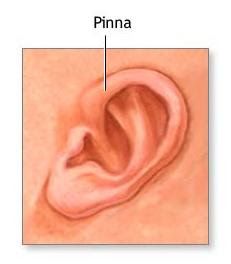The human ear is divided into three main parts, and these are the outer ear, the middle ear, and the inner ear. The first part is the outer ear, where the hearing process does not take place. In scientific terminology, the outer ear is called the pinna. Like a funnel, the pinna directs the sound waves towards the internal passage of the ear, also known as the auditory canal. It should be noted that nature has provided a more efficient pinna to several animals like antelope, deer, and tiger because their outer ears can be turned in any direction. The turning of the pinna allows these animals to receive sound signals without turning their head.
Surprisingly, Charles Darwin, a prolific biologist who is best known for his revolutionary contributions to science, had considered the pinna to be a rather superfluous organ in “The Origin of Species,” a book he has written that contains the infamous theory of evolution. He had explained that the pinna is an almost useless part of the ear by providing an account of a sailor who had the pinna on his left ear severed by a knife in a fight. Despite losing that portion of his left ear, he was still able to hear through the hole. In Darwin’s point of view, the pinna night has been useful in the early stages of evolution when our ancient predecessors were still able to rotate or turn their ears, but in the case of modern human beings, the parts sticking out from the left and right sides of the ear were considered redundant and had no more use at all.
Staunch followers of Charles Darwin’s theory of evolution, who are mostly biology researchers, did not think that it is necessary to make scientific studies on the pinna. Many years after Darwin’s death, a few researchers have started questioning that if it was the rule of evolution to eliminate useless organs gradually over the years, then how did the pinna escaped from being removed in the human’s body?
Because of the peculiarity of the pinna’s existence in human biology, some scientists decided to study and find out its modern functions. What these scientists discovered is that the two pinnae in the ears perform the task of identifying the direction of sound waves by ascertaining the angle where the sounds make their impact. The frequency of these sound waves plays a key role in this process, as there are a number of sounds that produce varying frequencies. If the frequency of one sound wave oscillates widely, then locating the source of this sound becomes impossible. This problem is the reason why it is extremely difficult for humans to know the direction of where insects like crickets are producing sounds.
What are the functions of the other parts of the ear?
Next to the outer, we have the middle ear that is made up of three bones collectively known as ossicles. These bones, when enumerated individually, are called the stapes, incus, and malleus. When the eardrum vibrates in the inner ear, these ossicles will vibrate as well in order to amplify the sound. This part of the ear is also connected to the nose and the throat via the Eustachian tube. This tube allows the person to swallow or yawn without damaging the membranes on their faces, as the Eustachian tube normalizes the pressure felt by the jaw when you perform the said action. When you have the flu, the Eustachian tube typically swells and gets blocked by mucus. Because the swelling causes numbness to the tube, you may experience temporary hearing loss.
The inner ear is considered the most part of the organ since, without it, you wouldn’t be able to hear at all. The one that produces the hearing signals to the brain is the cochlea, a peculiar spiral-shaped membrane that has more than 13,000 minuscule hairs on its surface. Whenever a bone in the inner ear vibrates, it will automatically tap the cochlea, and the membrane will then send multiple electrical nerve impulses to the auditory nerve. The auditory nerve will subsequently send the signals to the brain, and the nervous system is the one that handles the deciphering process as to what the person is hearing.
You might also like:

